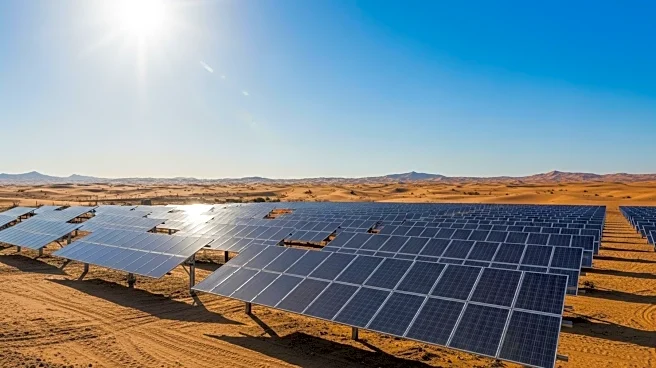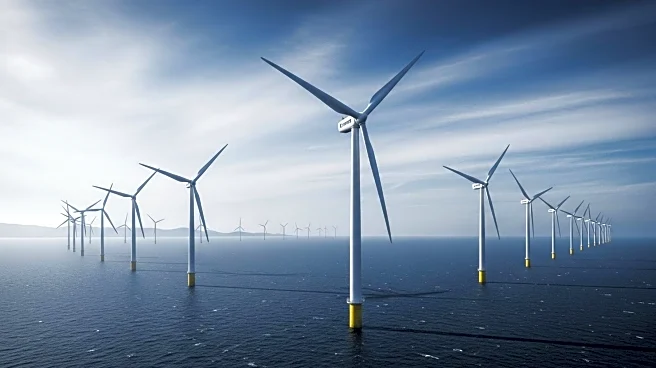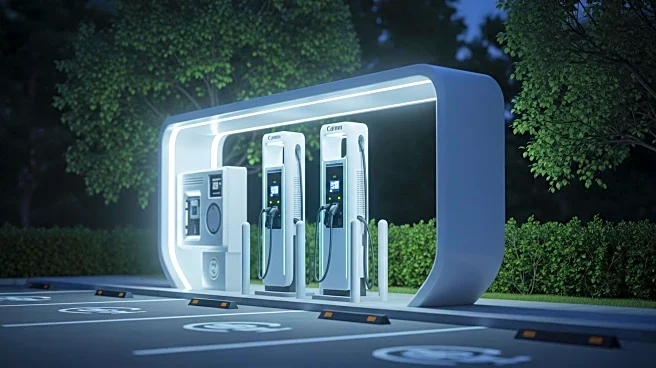What's Happening?
China's desert solar parks are contributing to ecological changes by cooling soil, reducing wind, and supporting plant growth. These solar panels, particularly in Qinghai's Gonghe Photovoltaic Park, have shown increased vegetation cover and healthier soils compared to surrounding desert areas. The panels provide shade, which moderates temperature fluctuations and increases soil moisture, fostering resilient plant and microbial communities. The International Renewable Energy Agency highlights the importance of site design, including module height and row spacing, to optimize these ecological benefits. While the panels are not a complete restoration solution, they offer potential for ecological recovery in degraded landscapes.
Why It's Important?
The ecological benefits of China's solar parks demonstrate a dual advantage of renewable energy projects: power generation and environmental stewardship. This approach could serve as a model for other regions facing climate challenges, offering a way to combat desertification and support biodiversity. The integration of ecological considerations into renewable energy projects aligns with global efforts to address climate change and land degradation. As these projects expand, they could influence policy and investment decisions, encouraging more sustainable practices in energy development and land management.
What's Next?
Continued monitoring and adaptive management are crucial to understanding the long-term impacts of solar parks on desert ecosystems. Scientists emphasize the need for ongoing research to track changes in vegetation, soil health, and biodiversity. This data will inform future project designs and management strategies, ensuring that ecological benefits are maximized. The success of these projects could lead to increased international collaboration and investment in similar initiatives, promoting sustainable development and environmental resilience.
Beyond the Headlines
The integration of renewable energy and ecological restoration in China's desert solar parks highlights the potential for innovative solutions to environmental challenges. This approach may inspire new strategies for balancing energy needs with ecological preservation, fostering a more sustainable future. The success of these projects could also influence global perceptions of renewable energy, emphasizing its role in supporting both economic and environmental goals.












